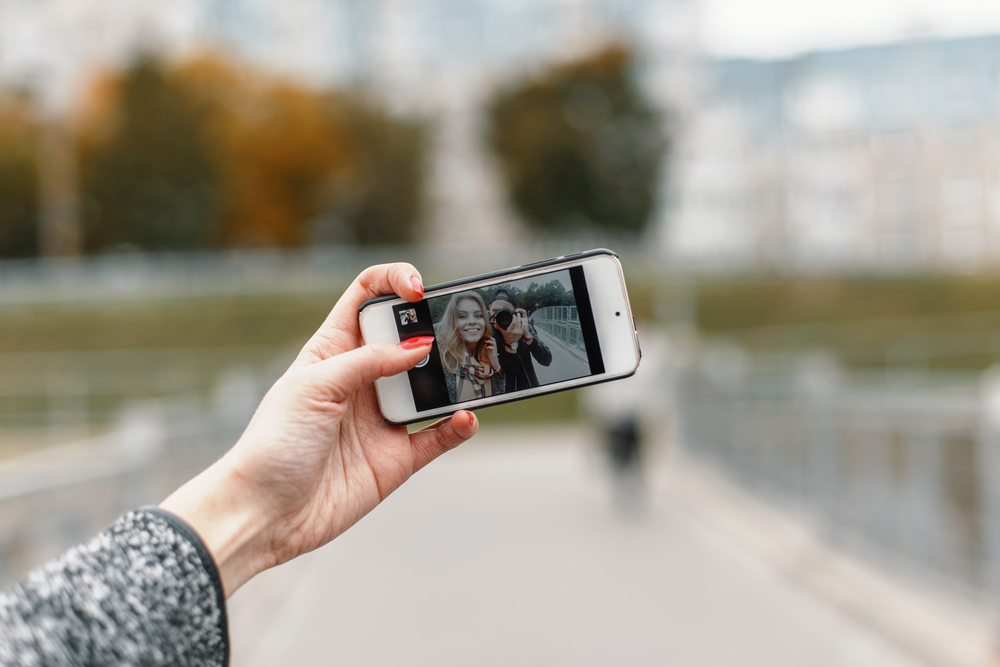
When selfies make you more mindful
As you may have noticed, I am a fan of using technology to support our mindfulness habits. Smartphones are, in my mind, not the enemy but a beautiful supportive practice tool – and not only because you can use our app Pause on them…
The use of smartphones democratized photography.
In 2000, Kodak announced that the world had broken a new record – 80 billion pictures were taken that year – and the growth since then has been exponential. Seventy-five percent of all photos are now taken with smartphones. In 2017, we will reach a projected population of 7.5 billion, out of which 5 billion people will own smartphones! The projected figure for photographs is in the trillion…
I apologize for all the maths, but based on these figures, I can imagine you, dear reader, are no stranger to the snapping of shots. And I would like to use this experiential history.
Acknowledging our emotions through selfies
Were you ever the official photographer at a wedding? Or the designated photographer at any kind of ceremony? Or maybe you just like to take the best shots of your food in a restaurant, or of yourself with a new outfit. Even when we take selfies these days, we see ourselves in the camera. This is a novelty. Previously we were not in control of the picture, because we never knew when the photographer would actually press the shutter button. But now we can choose our best angle and avoid the exact moment we’re blinking.
In any of those situations, a subtle shift took place. You took a step back in order to become an observer. Suddenly, you were not so much a participant as a witness. And if you’re focused on how a scene looks, you find your emotions about it – even the most emotional of weddings, celebrations or funerals – take a step back. It’s as if, by stepping out of the action, you’ve also turned the volume of your emotions waaaay down. I know I used to relish ‘having’ to take pictures at a event where I didn’t know anyone – it would give me a way to step away from my shyness or nervosity. My emotions were still there, but a soft whisper in the background. Did you notice?
Observation has become an inadvertent means of handling our emotions.
How men and women deal with their own image
Men and women have different skill-sets when it comes to watching and observing. Women are no strangers to watching themselves. As the art critic and novelist John Berger wrote in Ways of Seeing:
“A woman must continually watch herself. She is almost continually accompanied by her own image of herself. Whilst she is walking across a room or whilst she is weeping at the death of her father, she can scarcely avoid envisaging herself walking or weeping. From the earliest childhood she has been taught and persuaded to survey herself continually. […] Her own sense of being in herself is supplanted by a sense of being appreciated as herself by another. One might simplify this by saying; men look at women. Women watch themselves being looked at.”
Men are used to watching “out” of themselves. Mindfulness would have them pay attention to what is going on inside.
Whereas women are trained to watch themselves. Maybe that’s why the vast majority of selfies and Instagram snapshots are taken by them. They are still watching, and now are both object and subject. It is a first step on the road to mindfulness. But that step is not enough – in ‘the real world’, their watching usually comes with an extreme amount of criticism.
While the first stage is to notice, the second is to bring equanimity and compassion to the watcher and the watchee… But that is a subject for another blog post.
Today, let us just notice that with a very simple trick of the mind, we can tune the intensity of our feelings. If we can take just a little space, then we can also decide to not be identified with the feelings. There is always more space than we allow ourselves to think. There is always the possibility to take a few steps back in order for the photo to be framed more skillfully. There is always a way to not be in the picture. Through the simple action of watching the feeling, we take a little strength away from the feeling… So the next time you are absorbed in a photo op, take a moment to check how you feel in that precise moment.
 |
 |